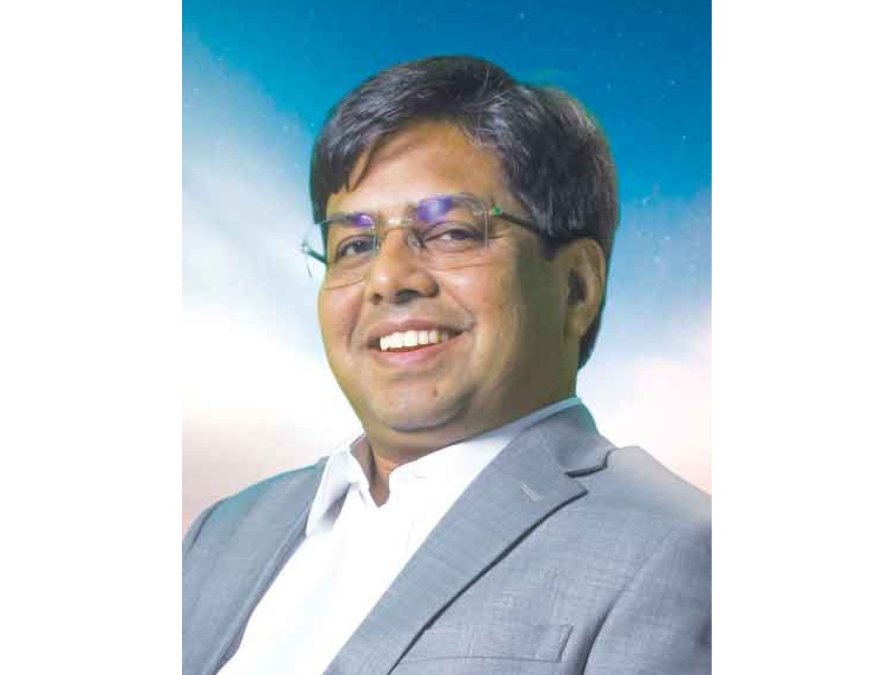HDD technology offers several advantages over conventional open cut methods for utility installation.
Ehteshamul Haque, Director Asia Pacific, Digital Control With increasing initiatives on construction of smart cities, rural connectivity and power to all, how do you look at India as a promising market for Horizontal Directional Drilling machines /trenchless technologies? In recent

With increasing initiatives on construction of smart cities, rural connectivity and power to all, how do you look at India as a promising market for Horizontal Directional Drilling machines /trenchless technologies?
In recent years, Horizontal Directional Drilling (HDD) has emerged as the preferred technology for utility installation in India. A well-established ecosystem of skilled manpower and suppliers has resulted in greater availability and more competitive rates for HDD technology compared to traditional opencut methods.
HDD technology has a broad range of applications, including Telecom fiber installation, Power Line installation, Cross country and City Gas installations, Water pipe installation under Jal Jeevan yojna, and Sewerage installations. Moreover, the Indian government’s initiatives towards smart cities and rural connectivity have further increased the demand for HDD technology, making it an attractive option for various infrastructure projects.
Overall, HDD technology’s cost-effectiveness, versatility, and efficiency have made it an essential tool for utility installation across the country. With its many advantages, HDD technology is becoming a game-changer in the field of infrastructure development in India.
As the technology of Horizontal Directional Drilling (HDD) continues to mature in India, local contractors have successfully executed multiple mega crossings, and some have even started exploring and executing work outside the country.
What are the latest technologies in your range of trenchless equipment to ensure trouble-free and safe operations?
The HDD technology has matured now and some of the new accessories in Indian market remains
a. Planning Tools
i. DCI TeraTrak to plan HDD bore path and survey elevation changes
ii. Web site like https://allaboutpipelines.com/ for designing of HDD projects
b. Electronic Data Capture
i. Online condition and location monitoring of assets
ii. Capturing of As built data on the device as well as simultaneous availability on the cloud
iii. Capturing of “GPS” coordinates along with HDD profile information
c. Rock Drilling
i. Rock hammers for drilling in rock
ii. Mud motor and associated mud mixing and recycling units for drilling in rock
iii. Specialist tools, cutters, and reamers
d. Specialist tools for mega crossings
i. Pipe assist/Pipe pushing.
ii. Magnetic Guidance system
iii. Gyro based Guidance system
e. Training System
i. Virtual Reality Training simulators
What is the presence of your company in India? What are the expansion plans?
Since its establishment in India in 2006, DCI India Pvt. Ltd. has gone from strength to strength. Initially started as a “Marketing and Service Support Outpost,” the company has expanded over the years into a full-fledged Sales and Service office, even hosting its global Virtual Reality and Augmented Reality lab. DCI India Pvt. Ltd. has launched the world’s first and only Virtual Reality Training Simulator for HDD Locating. Today, DCI India has resident support engineers at Bengaluru, Kolkata, Ahmedabad, and Bhopal, apart from a solid team at its office in Delhi. DCI India Pvt. Ltd. sees India as a strategic location with immense potential for developing Research and Development capabilities in the future. With its cutting-edge technology and innovative solutions, the company is well-positioned to play a pivotal role in advancing the infrastructure development in India.
Overall, DCI India Pvt. Ltd. is an excellent example of how global companies are leveraging India’s growing economy and talented workforce to bring world-class technology and expertise to the country.
How do you look at the advantages of using HDD versus the conventional methods in terms of savings time and cost?
Horizontal Directional Drilling (HDD) technology offers several advantages over conventional open cut methods for utility installation. Here are some of the key benefits:
• Reduced environmental impact: HDD technology allows for minimal disruption to the surrounding environment, as it requires fewer access points and reduces the amount of excavation needed. This can result in less damage to natural habitats, reduced soil erosion, and preservation of existing landscaping and infrastructure.
• Reduced costs: HDD technology can be more cost-effective than open cut methods, as it requires less equipment, manpower, and restoration work. With the ability to install pipes and cables at longer lengths in a single drill shot, HDD technology can result in significant savings in material and labor costs.
• Faster installation: HDD technology can be faster than open cut methods, especially in urban areas with high traffic volumes or sensitive infrastructure. The ability to drill underground without disrupting the surface minimizes the need for road closures and detours, allowing for faster completion of projects.
• Greater accuracy: HDD technology allows for precise placement of pipes and cables, minimizing the risk of damage or interference from existing infrastructure. This can result in fewer maintenance issues and longer lifespan for installed infrastructure.
While HDD is a revolutionary engineering, its application is still limited; what hurdles and challenges do you see in the growth of this industry and what kind of support are you looking for from the government?
As the HDD industry continues to grow in India, there are two significant challenges that require government intervention. Firstly, the decentralized nature of right-of-way for HDD installation has resulted in a lack of standardization and high liaison costs. Secondly, the absence of a central authority responsible for subsurface utility mapping has led to crowded underground infrastructure, accidents during installation, and no record-keeping of installed utilities. The Western world has adopted the “One Call Utility” services that provide existing utility data and collect new utility data, whereas in India, the lack of such a central authority poses a significant challenge. Without intervention, the challenges will only increase, and future utility installations may become prohibitively dangerous and costly. The need for a central authority for utility corridor allocation and data collection is crucial to ensure the smooth and safe installation of new utilities in India.
Hits: 548








